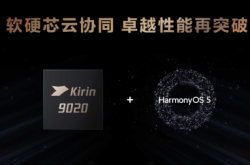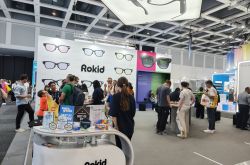Intel Misses the Last Bus of AI Chip Era
![]() 09/23 2024
09/23 2024
![]() 660
660
In 2021, Pat Gelsinger became the eighth CEO in Intel's history. His first goal after taking office was to make Intel a leader in every business area it competed in.
Three years later, not only has the anticipated leadership failed to materialize, but with AMD seizing the personal computer and server markets, coupled with the industry's shift from CPUs to GPUs, which are more suitable for AI computing, Intel's market space has been squeezed like never before. Compared to three years ago, Intel's revenue has declined by more than 30%, cash flow has turned negative, and debt exceeds $50 billion.
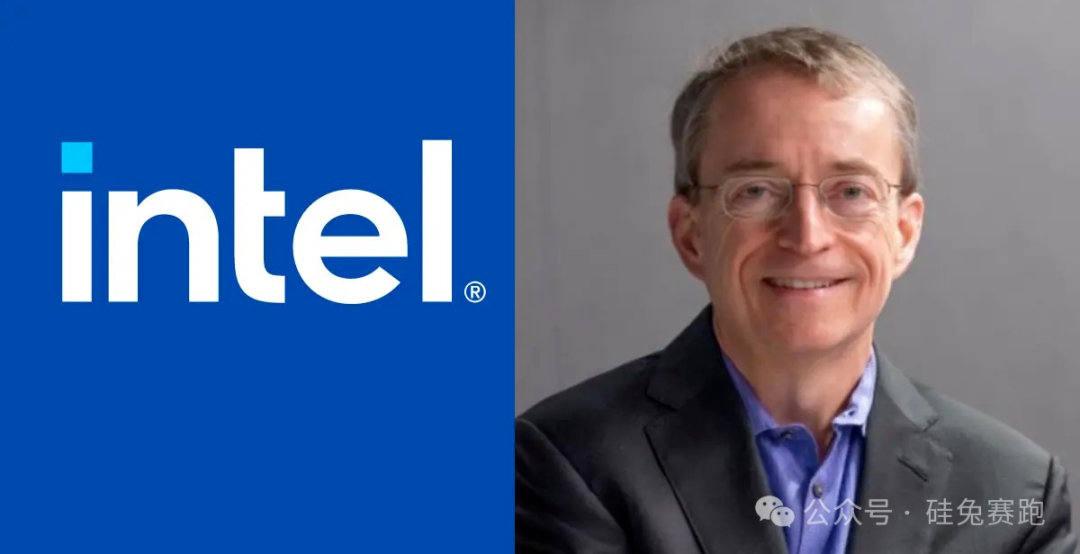
Pat Gelsinger | Image source: Market Realist
Since 2024, Intel's share price has halved. Its current market capitalization is $91.25 billion, just about 12% of Broadcom's, 10.5% of TSMC's, and 3.3% of NVIDIA's.
In September, Gelsinger issued a letter to all employees, initiating the company's largest transformation in history to save itself. Prior to this, he had already announced layoffs of 15,000 employees and a $10 billion cost reduction. This time, he made an even more drastic move: spinning off the foundry business into an independent subsidiary, appointing independent directors, allowing external capital increases, and achieving "a clearer separation and independence" from Intel.
The latest development is that on September 21, according to informed sources cited by the Wall Street Journal and The New York Times, Qualcomm is in talks with Intel about an acquisition, although Qualcomm has not made a formal offer to Intel. Neither company has officially responded.
As the once most powerful chip manufacturer globally and currently the only company in the high-end logic chip field with capabilities in platforms, architectures, design, and manufacturing, how did Intel find itself in this situation step by step?
It appears that the rise of generative AI has made Intel the first giant to be crushed under the wheel of the times. However, no snowflake is innocent in an avalanche. In the past 20 years, Intel has made four strategic decisions that went against the trend of the times. Today's self-rescue measures, including the spin-off of the foundry business, are more like a card Intel must play to stay in the game, and it's already too late.
01
Undeniable Lagging Behind
The direct reason for Intel's recent adjustments can be traced back to its Q2 2024 earnings report released on August 2.
This is a financial report that cannot be whitewashed anymore. The data shows that Intel incurred a larger-than-expected loss in Q2 2024, with revenue down just 0.9% year-on-year, but a net loss of $1.61 billion, far exceeding market expectations of a $540 million loss, and more importantly, with no signs of narrowing, with expected losses continuing to widen in the next quarter.
The decline in net profit is related to the decline in gross margin. Intel's gross margin for the quarter was 35.4%, significantly lower than market expectations of 42.1%. Intel attributed this to the increase in AI PC products, adjustments to wafer capacity, and rising expenses in other non-core businesses.
Intel primarily serves the microprocessor market, including personal computers and servers. By segment, Intel's business segments include Client Computing Group (CCG), Data Center and AI Group (DCAI), Network and Edge Group (NEX), its investment in autonomous driving company Mobileye, and Foundry Services. The first two segments account for over 80% of total revenue.
The Client Computing Group is currently the only growing segment, with Q2 revenue of $7.41 billion, up 9.3% year-on-year, but the global PC market is already a mature market with slow shipment growth.
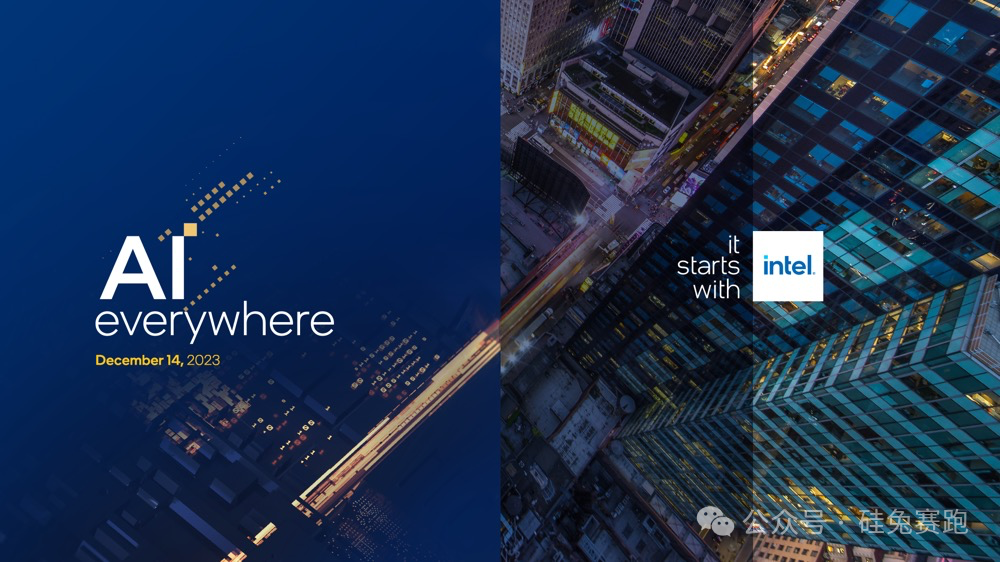
Image source: Intel
The Data Center and AI Group, which garnered significant attention, reported revenue of $3.406 billion, down 14.9% year-on-year. In comparison, NVIDIA's data center revenue grew 154% year-over-year during the same period. In other words, while data center business was once a core part of Intel's operations, it failed to achieve expected growth and instead saw a decline in revenue, forming a stark contrast to the growing demand for AI and high-performance computing across the market, proof that Intel has fallen behind in the AI wave.
Moreover, both Network and Edge Group revenue and Mobileye's revenue declined to varying degrees. Foundry Services revenue was $66 million, which is negligible when measured against wafer fab revenue standards.
In other words, Intel's current situation is one where its core business is shrinking, and it is lagging significantly in the competition for new technological trends. It is foreseeable that as AI competition intensifies, Intel, whose business is primarily concentrated in traditional CPUs and servers, will continue to lose market share to competitors like AMD and NVIDIA.
Accompanying this financial report, Intel announced that it would lay off 15,000 employees within the year, equivalent to a 10% reduction in its workforce, and would suspend dividends starting in Q4 of this year, marking the first time in 20 years that Intel has suspended dividends. Upon announcement, Intel's market value fell by over $32 billion in a single day.
Five days later, angry shareholders filed a class-action lawsuit in San Francisco. They argue that Intel "fraudulently concealed problems with the company," leading to a decline in performance and share price.
02
Repeated Mistakes
Although shareholders filing the class-action lawsuit claim that the company's deception caught them off guard, in fact, Intel had already fallen behind even before the rise of generative AI technology.
If the development of a large company is compared to a relay race, critical decisions are akin to baton passes. Intel's fate lies in the fact that in the last 20 years, it has stood on the opposite side of the times in almost every critical technological trend, constantly playing catch-up and ultimately falling out of the first tier.
In 2006, Intel's management at the time made its first misjudgment by rejecting the first-generation iPhone as a foundry customer, citing Jobs' ultra-low bid, which was far below Intel's internal cost estimates. From a commercial decision-making perspective for a listed company, this choice is not entirely unconvincing. Intel was at its peak at the time, with a significant market share generating substantial profits and resources, which were used to consolidate its industry leadership. Changing suppliers became costly and risky, and profit declines were unacceptable.
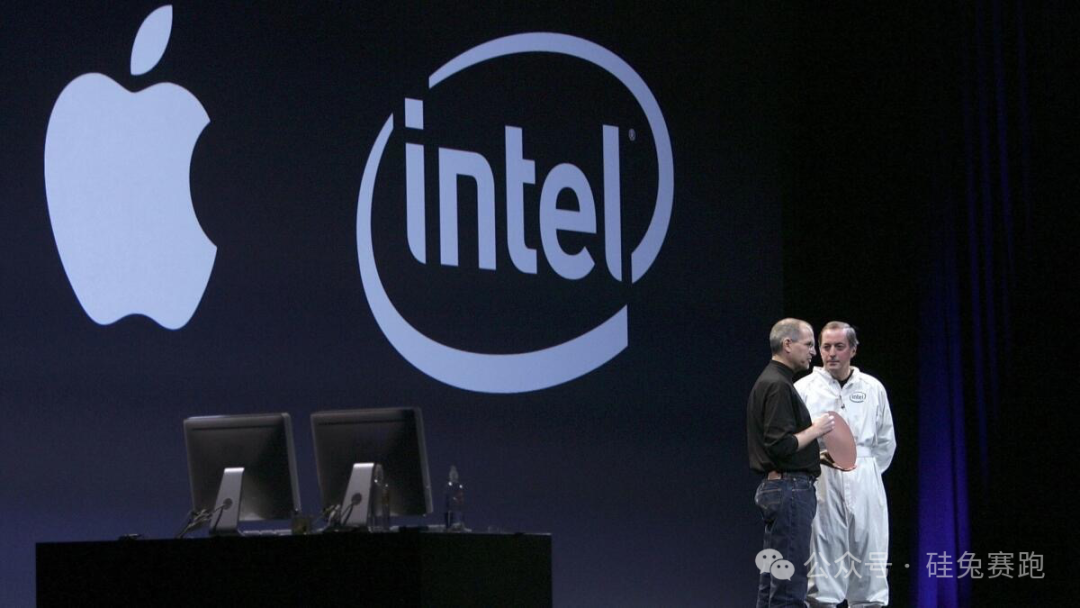
Image source: Los Angeles Times
However, in retrospect, this choice came at a high cost: Intel not only missed the most crucial entry opportunity in mobile internet but also gave Samsung, which later became Apple's foundry partner, room to grow, making it Intel's largest chip foundry competitor in the future.
Similar strategic mistakes have been repeated. Intel also failed to grasp the ARM architecture. Due to Intel's insistence on high-performance, high-power chips, it was passive in meeting the demand for low-power chips in the mobile market and failed to recognize the long-term value of low-power ARM architectures. This led to its superficial exploration of ARM architectures, ultimately exacerbating its lag in the mobile market.
If there was still a glimmer of hope for Intel to catch up when it lagged behind in the first two legs, falling behind in the race for advanced process technology became a watershed moment for the company.
In 2014, both Intel and Samsung achieved the production of 14nm process chips. However, by 2017, TSMC had advanced to 10nm process technology, while Intel's reluctance to adopt the latest EUV lithography technology delayed its 10nm products by two and a half years compared to TSMC, leaving Intel far behind and subsequently losing ground in the competition for advanced process technology.
The final major technological trend that Intel missed was its failure to give sufficient importance to GPU development. Intel had long relied on the success of CPUs, forming an inertial mindset that prevented it from recognizing the market demand for high-performance graphics processing in time. It was not until 2018 that Intel began to focus on GPU business, but by then, NVIDIA had already cultivated the entire industry through its CUDA platform.
Beyond these four misguided decisions, Intel also has one regret. Around 2017, OpenAI actively sought investment from Intel. This deal could have brought financial returns to Intel and potentially helped it gain a strategic first-mover advantage in AI. However, due to the management's judgment at the time that generative AI technology would not scale up in the short term, Intel ultimately missed out on this crucial ticket to the generative AI era.
Also in 2017, Intel entered the AI-specific chip market by acquiring Nervana Systems. In the following years, Intel successively launched multiple AI chip series, but these products failed to make a splash in the market.
From missing out on the opportunity to collaborate with Apple to overlooking the long-term value of the ARM architecture, to lagging behind in chip process technology and underestimating the development of GPUs, every misstep by Intel paved the way for its current predicament. Early in the development of these technological trends, Intel invested in pre-research and was even once ahead of the curve, but it ultimately failed to shake off the inertia of being a large company and the constraints of being a listed company responsible to investors and shareholders, losing the initiative. By the time current CEO Pat Gelsinger took office, Intel was already facing significant challenges.
03
Gelsinger's Prescription
Gelsinger's reform measures upon taking office can be summarized into three main points: reducing the gap in chip process technology, leveraging policy subsidies from the US government to build advanced wafer fabs, and separating chip design and manufacturing to make the company more asset-light.
From a business model perspective, by the time Gelsinger took office, Intel's Integrated Device Manufacturer (IDM) model for chips had become a painful core issue.
Intel is the only IDM model company in the high-end logic chip field. The IDM model refers to a company that undertakes all aspects of chip design, packaging, manufacturing, and validation. Representative companies include Intel, Samsung, and Texas Instruments.
Once upon a time, Intel designed chips and had them manufactured in-house, which was commercially advantageous for cost control. However, as chip process technology continues to advance, the cost and difficulty of mass-producing chips have also increased. The foundry model began to show its advantages. Foundries like TSMC gained experience by serving multiple customers, gaining more opportunities for technological iteration. As advanced process technologies gradually matured and entered mass production, foundries could charge premiums for advanced technologies, thereby enhancing their profitability and facilitating further process expansion and capital expenditures.
In contrast, under the IDM model, Intel's primary manufacturing customers were itself, limiting its market adaptability and technological innovation space. Intel has long focused on mature markets, lacking sufficient R&D momentum in emerging technologies such as AI and mobile internet. This, in turn, made Intel more passive in manufacturing, with insufficient profits to invest in advanced process R&D, gradually widening the gap with industry leaders.
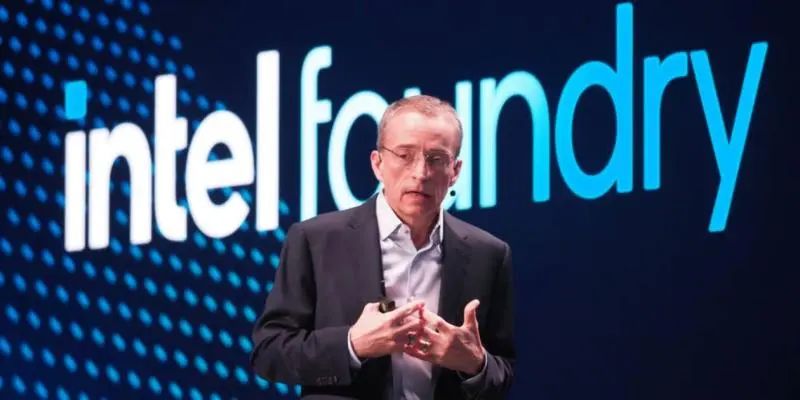
In the past two years, Intel's foundry revenue declined from $27.49 billion in 2022 to $18.9 billion in 2023, with operating losses widening from $5.2 billion the previous year to $7 billion. It is foreseeable that if no measures are taken, the losses will only worsen.
From an industrial trend perspective, the separation of digital chip design and manufacturing is almost a commercial necessity. First, the separation model for digital chip design and manufacturing has become increasingly mature, with many digital chip designers not even needing to understand the manufacturing process. Second, the R&D costs for advanced digital chip manufacturing processes are rising, and only independent foundries can accept a wide range of orders to spread costs. They can also rely on these orders to further refine their manufacturing processes and improve yields, which IDM fabs lack the capability to do, putting them at a natural disadvantage in competition.
In Q1 2024, Intel finally spun off its design and manufacturing operations, transforming its business segments into three product groups: Client Computing Group (CCG), Data Center and AI Group (DCAI), and Network and Edge Group (NEX). The foundry became an independent operating unit, Intel Foundry, with separate financial reporting.
In other words, the relationship between the Intel Foundry and Intel's product groups underwent a significant transformation: product groups could choose more competitive foundries besides Intel Foundry; Intel Foundry could also seek external design customers at market prices and independently account for revenue from both external customers and Intel products.
On the surface, the independence of Intel Foundry could increase its chances of securing external customers, aiming to improve capital efficiency and attract external investments to reduce losses and increase profits.
However, this assumption also has notable flaws: First, Intel already faces severe technological and product lags, and even a spin-off does not address the root cause; second, it is questionable whether chip design companies would entrust their chip manufacturing to a competitor that also has a design business; finally, based on the above two points, the spun-off foundry segment is likely to continue facing underutilized capacity, while the design segment faces fierce external competition. In other words, while the spin-off may make both segments more flexible, it could also make them weaker.
According to research firm TrendForce, in Q2 2024, Intel did not rank among the top 10 global foundry revenue earners. Over the past year, Intel briefly appeared on the list in Q3 2023 with a 1% market share.
04
Shrinking to Save Itself
Gelsinger's recent letter to all employees' most significant move was to spin off Intel's design and foundry operations more thoroughly. In other words, Intel has had to effectively shrink from its previous ambition to be a leader in multiple fields.
After the release of the second-quarter financial report, Kissinger said, "We previously aimed to regain our leadership position, but now we need to focus on efficiency."
In addition, Intel's upcoming key initiatives include: First, expanding cooperation with Amazon Web Services (AWS). Intel has secured a manufacturing contract for Amazon chips and will produce customized AI chips for Amazon using its most advanced 18A manufacturing process (1.8nm node).
Second, cooperation with the US military. According to the CHIPS Act, the Biden administration will provide Intel with up to an additional $3 billion for the "Secure Enclave" program, aimed at expanding the supply of microelectronics to the Department of Defense.
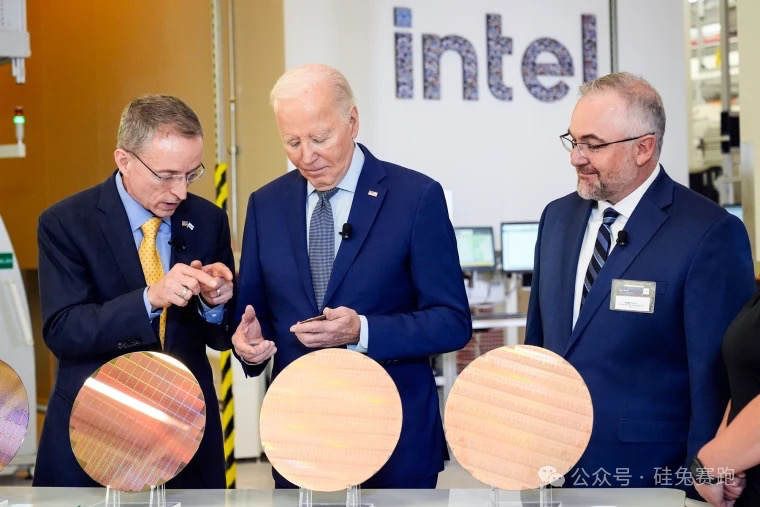
Image source: NBC News
Third, suspending some factory investment in Poland and Germany.
Kissinger said, "We need to integrate our cost structure with innovative operational strategies to achieve a fundamental transformation in our operating model. Currently, our revenue growth has not met expectations, and we have not fully capitalized on the opportunities presented by cutting-edge technologies such as AI. Meanwhile, our costs remain high, leading to low profit margins."
Intel's future trajectory hinges on two key factors: First, the collaboration with Amazon, which will not only serve as a benchmark for Intel's competitiveness in the AI era but also generate billions of dollars in revenue for the company.
However, in early September, Reuters cited sources as saying that Broadcom found the yield of Intel's most advanced 18A process insufficient for mass production after testing it. Intel has not commented on this matter.
The second factor is government funding. As part of its effort to revitalize the US semiconductor manufacturing industry, the Biden administration proposed the CHIPS Act, and Intel is one of the few domestic manufacturers available to them. In March of this year, the Biden administration awarded Intel up to $8.5 billion. However, this funding has not yet been disbursed, and with adjustments to Intel's manufacturing operations, it is widely believed that the allocation of funds will also change.
The company is facing challenges both internally and externally. Intel's core business revenue has declined significantly in recent years, putting pressure on its cash flow. At the same time, competitors have relentlessly pursued R&D and market expansion, forcing Intel to propel the company towards a positive cycle within a short timeframe. Whether it's the hasty launch of immature high-end products or its previous rash expansion and subsequent contraction in Europe, Intel's anxiety in pursuing rapid success is evident.
Intel's various self-rescue efforts still need time to be tested.
The most tangible effect so far has been layoffs. Intel has already laid off half of its workforce. On various global social platforms, many posts have emerged from individuals who have "graduated" from Intel. Some express anger, while others lament the situation. A former Intel employee who left the company several years ago reminisces about Intel's generosity towards its employees. Compared to the intense work environment at TSMC, he says working at Intel offered freedom and good benefits. However, it was precisely this overly comfortable work environment that made him sense the impending crisis and choose to leave early.



